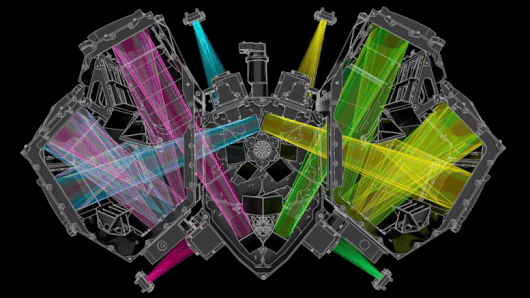NASA's James Webb Space Telescope is now experiencing all "Seasons" from hot to cold, because it is undergoing thermal stability tests. At the same time, the final stage of commissioning is ongoing: in-depth study of the details of scientific instruments, which is the core of Weber telescope** In order to complete the commissioning, Weber's team will measure the detailed performance of scientific instruments before the start of routine scientific operations in the summer.

On Monday, Scott Friedman of the Space Telescope Science Institute (STScI), the chief commissioning scientist of the Weber project, introduced all the details of this final stage of commissioning.
"With the telescope beautifully aligned and the observatory approaching its final low temperature, we are ready to start the last group of activities before the start of scientific observation: the commissioning of scientific instruments. I will only describe some of these activities here."
"Near infrared camera (NIRCam), near infrared spectrometer (nirspec), near infrared imager and near infrared seamless spectrometer (niriss), mid infrared instrument (MIRI) and fine guidance sensor (FGS) Wait until the instrument has been powered on and cooled down safely. We have operated their mechanisms and detectors, including filter wheel, grating wheel and nirspec's Micro shutter assembly. The Weber optics team uses images of isolated stars taken by each instrument to align the primary and secondary mirrors of the observatory. But before Weber is fully ready to start ambitious scientific observations, we have more work to do, which will reveal the secrets of the universe. "
"We will now begin to use a wealth of astronomical resources to conduct an extensive set of calibration and characteristic analysis of the instrument. We will measure the throughput of the instrument - how much light enters the telescope reaches the detector and is recorded. Every time it is reflected by the mirror of the telescope and each instrument, there will always be some loss, and no detector will record every arriving photon. We will measure light of multiple wavelengths by observing standard stars The light emission of these stars is obtained from the data and theoretical calculations obtained by other observatories. "
"The astrometric calibration of each instrument maps the pixels on the detector to the precise position in the sky to correct the small but inevitable optical distortion in each optical system. We do this by observing the Weber astrometric field, a small piece of sky in the nearby galaxy's Large Magellanic Cloud. The Hubble Space Telescope observed this field and determined the coordinates of about 200000 stars with an accuracy of 1 Milliradians. In order to accurately place the scientific target on the field of view of the instrument, this distortion needs to be calibrated. For example, in order to use the nirspec micro shutter assembly to obtain the spectra of 100 galaxies at the same time, the telescope must be aligned so that each galaxy is in the appropriate shutter, and there are 250000 shutters! "

The optical instruments we use, for example, will provide the astronomers with additional information about the quality of the image of the target before the light enters the telescope, that is, the diffraction function of each optical device. For example, we know that the optical device will provide more information about the dispersion of light than we expect Into the color of its composition. Measuring the point spread function in each instrument at different wavelengths provides an important calibration for interpreting the data. "
"We will test the target acquisition of each instrument. For some observations, it is sufficient to use the position of the guide star in the fine guidance sensor to point to the telescope and know the position of the scientific target relative to the guide star. In this way, the scientific target can be positioned with an accuracy of a few tenths of an angular second. However, in some cases, more accuracy is necessary, about one hundredth of an angular second. For example, for coronal images For example, a star must be placed behind a mask so that its light is blocked so that nearby exoplanets can illuminate. In time series observation, we measure how the atmosphere of exoplanets absorbs starlight in the hours before passing through their stars, so that we can measure the properties and composition of the planet's atmosphere. Both applications require the instrument to send corrections to the pointing control system of the telescope in order to accurately place the scientific target in the correct position in the field of view of the instrument. "
"The last example of our instrument debugging activities is the observation of moving targets. Most celestial bodies are so far away that they look stationary in the sky. However, this is not the case for planets, satellites and rings, asteroids and comets in our solar system. Observing these things requires the observatory to change its directivity relative to the background guide star during the observation process. We will observe different objects by using each instrument An asteroid with apparent velocity to test this ability. "
"Before Weber is fully ready for his scientific mission, we are now in the last two months of Weber commissioning. We still have important features and capabilities of the instrument to test, measure and demonstrate. When these are completed, we will be ready to start the great scientific plan eagerly awaited by astronomers and the public. We are close."